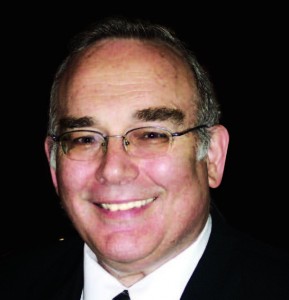Chairman’s Message – Fall 2016
 In response to a recent column of mine, I received a letter from a reader who was somewhat upset that I expressed admiration for a gadol who identified with the Chareidi world, and presented him as a role model for my grandchildren. “The idea that a proper role model [for the Modern Orthodox world] is a Chareidi rav is why Modern Orthodoxy in the United States is in trouble,” stated the writer.
In response to a recent column of mine, I received a letter from a reader who was somewhat upset that I expressed admiration for a gadol who identified with the Chareidi world, and presented him as a role model for my grandchildren. “The idea that a proper role model [for the Modern Orthodox world] is a Chareidi rav is why Modern Orthodoxy in the United States is in trouble,” stated the writer.
While I certainly understand the letter writer’s admiration for rabbinic leaders and roshei yeshivah who share his positions regarding the State of Israel and other important matters, I view things somewhat differently.
Readers of this column know that I frequently reminisce about Williamsburg, but in responding to this reader, I can think of no better way to illustrate my point than by drawing upon the neighborhood of my youth.
I personally have little use for terms such as “Chareidi” and “Modern Orthodox” (although I easily fit into both camps with my black hat and Yeshiva University education). Such labels simply did not exist when I was growing up in Williamsburg in the fifties. Jews of all stripes found a haven in this very tolerant, Jewishly diverse neighborhood. At Torah Vodaath, my classmates came from all kinds of homes, but the principal of the middle school at the time, Rabbi Dovid Bender, a”h, was a prince of inclusion. He made all of us—those from rabbinic families as well as those from irreligious families—feel equally accepted and loved.
At the time, Williamsburg was a community of survivors. While my friends and I were American born, we were surrounded by Jews who emerged from horror of the Holocaust and had lost everything in the European inferno.
Everything but hope.
They came to these shores determined to rebuild, to start again.
We didn’t need to hear terms such as “achdut” or “Jewish unity.” We were surrounded by greatness—and we knew it. Consciously or not, we knew that we too had a role to play in rebuilding Jewish life in the aftermath of the Holocaust. Our love for our fellow Jews burned strong—and, even as kids, we understood that we were living in historic times, that we were somehow plucked by destiny to help rebuild our shattered people.
Chassidic rebbes whose courts had been decimated in Europe began trickling into Williamsburg as well. On Friday nights, the streets would be teeming with fathers and sons heading to various tisches. Did it matter that most of us were not Chassidim? Not in the least. I recall one particular Simchat Torah when I attended the Satmar Rebbe’s shul. I was wearing a light-colored jacket, my conspicuously non-Chassidic attire clearly broadcasting my more modern roots. But within a few minutes, I was pulled into the Rebbe’s inner circle of dancers, and we danced that night with a passion and an intensity that I cannot forget.
Some may accuse me of romanticizing Williamsburg. I don’t believe I am.
But there is no question in my mind that if there is one thing that contemporary Orthodoxy needs it’s an infusion of acceptance, tolerance and ahavat Yisrael—an ahavah that transcends ideological differences and superficial boundaries. I thank the letter writer for taking the time to share his thoughts and for giving me the opportunity to express my views about the need for greater achdut and acceptance.
Emphasizing these same themes of acceptance and tolerance, writer Bayla Sheva Brenner explores the painful subject of family estrangement in this Rosh Hashanah issue. Delving into the difficult situations that tear families apart, Bayla Sheva’s beautifully crafted article, which covers the timely topics of forgiveness and reconciliation, features the diverse perspectives of rabbis, therapists and estranged family members themselves.
In this jam-packed issue, we also get to meet Heda Margo, an Orthodox woman chaplain—only a handful of Orthodox women are board-certified chaplains—who spends her days providing spiritual support and care to patients at a Manhattan hospital. In the profile by writer Larry Bernstein, chaplain Rabbi Daniel Coleman is quoted as saying that women are “inherently gifted with the qualities that are at the heart of professional chaplaincy;” a staunch supporter of female chaplains, Rabbi Coleman is dedicated to encouraging Orthodox women to pursue this rewarding profession.
With the advent of the technological era, the “generation gap” seems to be ever widening. Thus, this issue is devoted to defining and understanding a fascinating cohort: Orthodox millennials. To better understand them, our writers asked a number of penetrating questions including: what are the unique characteristics of millennials? How do these characteristics impact religious life? What are the particular challenges facing Orthodox millennials on campus? We hope this is the beginning of a longer conversation, and that you, our readers, will contribute your own thoughts and opinions at www.ou.org/jewish_action.
Wishing all of you a ketivah vachatimah tovah!
Gerald M. Schreck is chairman of the Jewish Action Committee and vice chairman of the OU Board of Governors.
